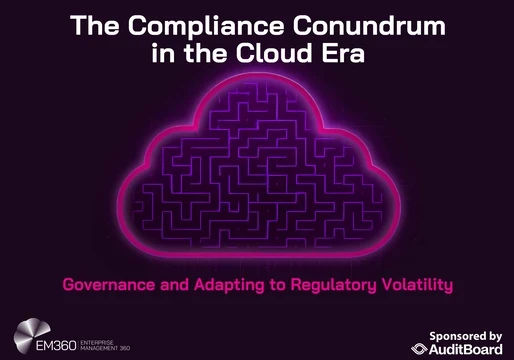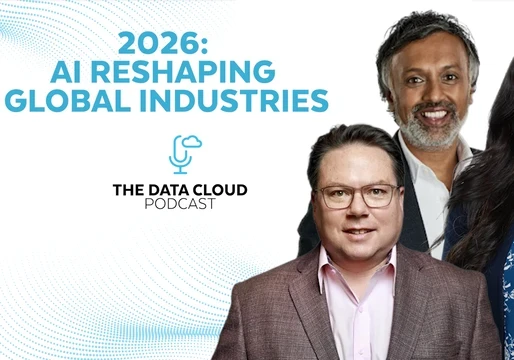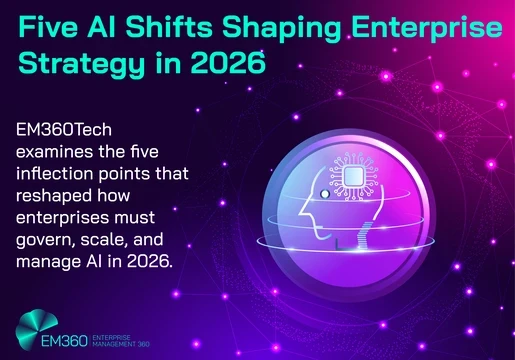Our Q&A interview covers the need for data practitioners to adapt to new responsibilities involving data quality and AI agent interaction.

Enterprises clearly want to accelerate how they attain more business value from their comprehensive data. Not only do they want to get that value faster, they also want to apply it more broadly to more people and across more business functions.
As we enter the era of agentic AI, global integrators like Accenture are uniquely positioned to optimize and orchestrate all the many parts of what constitutes the AI first enterprise.
As the Global Data Capabilities Lead at Accenture, Teresa, you're able to see how vast data resources from all angles can be marshaled to enable AI agents as they mature and take on more assignments and become effectively teammates to the lines of business.
For the leadership of the global 2000 enterprises that you work with, what should they expect from these latest AI capabilities, and how should they best measure the business outcome success from the many years of investments and toil that they've put in to get us to where we are?
Teresa Tung: Thanks, Dana. Again, with this generation of AI, it's still the same -- that proprietary data is a company's competitive advantage. I think sometimes people think with this generation, somehow the rules have changed, but we're still continued to be measured by business outcomes.
The great news is that the promise is easier to unlock, and the scale is more disruptive than ever. We're seeing this generation of AI not only impact productivity but impact the end business outcomes, whether this is through improved customer satisfaction, increased sales, improved on time in full in supply chain, and reduced waste.
We should measure the business outcomes of this generation of AI, just like we look at any other business outcome. I think that's number one. The great news that I started with, again, is a company's proprietary data is their competitive advantage. And what this means is that you have to invest in getting that data right so that this generation of AI can do things that mean is meaningful for your company.
Because these large language models, they seem magical. There's something that a smart college intern who knows a little bit about everything might be. Just like that smart intern who comes to your company, you have to teach them, right? You have to teach them about what's right for your business and what's the secret sauce there.
By bringing those things together, you get to unlock this really disruptive age of AI. But again, you have to start with your data.
Dana Gardner: Teresa, before we go further into how the data is so strategic and important, tell us about yourself, your role, and your organization within Accenture.
Teresa Tung: I lead our Global Data Capability. What that means is I'm really looking at the vision as to what it means to do data. And I've been pretty busy the last two years, as you can imagine, because how we as a data industry have practiced data, it has been completely disrupted. The things that we got really good at, we got good at thinking about data as a product, right?
We started looking at data supply chains and looking at data governance. And I think, again, the industry leaders, we knew what good dominant design looked like. And with generative AI, it's changed. It's changed in two ways. I think one most exciting change is that data is now more strategic than ever.
We are not just talking to data engineers, data scientists, software engineers. It's not CIO- andCTO-type discussions. This is elevating those roles. Your Chief Data Officers or your data engineers, they need to be part of an overall business strategy. It is something that the CEO and the board of directors needs to think about.
Do I have my competitive data to be able to see across the business? So I think that's one. The second one is really around the different ways to do data. Not only is it more important, you still need to think about trusted data. I think that's what we're still trying to get to, but the types of data -- it's not just your structured data, supply chain, things in a tabular form, which we are really good at – but also how do you secure and govern it all.
But now thinking about things like unstructured data -- things like documents and code, podcasts and videos and voice -- it's bringing all those to bear in a way that now you can have trusted data across all these different data types.
Dana Gardner: The more data the better, but the more data, the more likely that there could be some issues about that trust or compliance or whether you are retaining the competitive advantage and not spilling it to areas where it shouldn't be.
And getting to all the data has been a hurdle. What are we trying to overcome in order to get to that nirvana of the right data to all the people to make it like oxygen available to all people to consume safely?
Teresa Tung: I think there's two things that have changed. Again, very much like the practice of data, I think data has really been thought of more. I mentioned as an industry; we're looking at data as a product. That's been a trend that we've been looking at the last five or some years. Before that, we've been looking at data more as projects. Again, as a data practice, companies would have an idea.
You might stand up a system and you might interview and find people in the company who had the data. You get access to the data, then you talk to the domain experts about what that data is. You create something and then you may publish it in a dashboard.
And sometimes you just have the insight and you stop. That whole process can take months of time. And it took all these people that I mentioned, both the tech experts as well as the domain experts. And after that insight was given, we as a practice didn't actually document a lot of that. It wasn't really thought of for reuse.
So, over the last five years. We've been looking at the pivot of data as a product, and we've seen this change with software, right? When people write software developers of today, they start with what's on open source and microservices, and that's where they start building. So data products are almost the same thing.
Can I have package data? Where I know it's been trusted in governed. So here's my sales data, my finance data, my marketing data. So that now if I want to bring together the data to see what's new, the new campaign, I don't need to spend that first cycle looking for the data and trying to understand both the technology to access it and what it means.
I think that practice is really key. In the beginning I mentioned that. The types of data are different now than before. So again, we've done this again the last five years, more in structured data for analytics and sometimes for operations. What's really different now, again, is the types of data we need to think about, but also the promise that AI can bring to actually make some of our jobs easier as data practitioners.
Dana Gardner: It seems that in the past, as you've been describing, you had to be proactive to go get the data, query the data, package the data so that you could consume it or deliver it. But we're getting to the point now where the data is going to be where you need it to be without you're asking for it.
There’s the agency within the ability of the data to deliver itself in the right format, to embed itself in a process to make itself digestible to more people in more lines of business. That's where we're getting to. What's the hurdle that we need to overcome to get to that level?
Teresa Tung: I think one is the practice itself, right? So that pivot in terms of the project to the product pivot really requires the business to take accountability. At the end of the day, in everything I described as technologists, we can get so far right. We could get the systems to capture, we could get the systems to process and to transform and to analyze and even the systems to consume.
But at the end of the day, we really need to put this in the users’ hands. When you were talking about some self-service and democratization, we need to get the data in the hands of the true end user, those true experts who are going to know two things.
One is they're going to know, given a business process that they're running, they're going to know what's the data generated from that process, what it actually means. And then also they're going to know what data do I need to actually accelerate and be more meaningful to make a better decision in that process itself and even automate it altogether.
So, we really need to get that part of the business and those folks to democratize in the data journey, right in the data product. Ownership and creation. At the end of the day, those are your end users and those are the owners, and, and we need them to be accountable. We need them to be part of that product creation. We need to be measuring value on how they're using this data and, and what they need.
Dana Gardner: And as I mentioned earlier about agents, we have agents that can take more of a role in getting the data to the people in the right place at the right time.
But also, we have agents that allow the people to access the information and the analytics in ways that don't require a lot of SQL knowledge or experience. So where do you see that interface and availability from agents increasing and benefiting those outcomes that we talked about earlier, those lines of business productivity outcomes?
Teresa Tung: I think you just touched on a really great one, not needing to know SQL. Every company has team standup for doing business intelligence (BI), and these teams are doing a lot of that manual work that I mentioned before. They're real experts as knowing the data sources, how do you bring it together and to get insights.
And they could be so optimized and efficient. But the point is they're still doing a lot of that manual work, and they're not likely those ultimate and experts that we talked about. And so rather than doing sort of this BI work, you could use AI for BI. So, this means equipping that expert rather than needing to write SQL queries with a conversational agent so that they can ask any questions about the data.
This isn't to say that you're going to get rid of dashboards altogether. I love a good dashboard. However, a good dashboard is really the key. We find that across companies, maybe 30 to 40 percent of dashboards are used possibly once, if at all. So there's a big opportunity to say, “There are a lot of dashboards, but they're not being used.”
They're being used almost as a different type of data access tool. There are people doing ETL within the BI dashboard, which is really not the point of it. And really they're trying to just ask any question. So I think one is we are finding the ability to actually use AI and that agent, that conversational agent, so that any expert who knows the domain can ask any question, and then there's another set that can be taken away with.
Not needing to ask any questions. Maybe I don't even need to ask a question because this data is going to be used to make a decision, right? It's going to create an action. So I could use agents to automate that whole thing, right? So thinking about that opportunity, that's a great opportunity.
Dana Gardner: It brings to mind the notion too, that you don't always want to be in front of a computer calling up a dashboard or creating queries. A lot of the people who will get the most use out of the data outputs and the analytics and the AI are in the field, and they're perhaps maybe on a phone or they're at the edge, so to speak.
Are we seeing more of the ability to get these data benefits to more types of people that aren't necessarily sitting in front of a computer, for example?
Teresa Tung: I definitely think so, and all the way through to the automation within a warehouse, right? We could imagine robotic systems, and these robots need to do things, but how do you get the actions?
Well, they're going to need to understand what's happening. That's a call to data. And then based off of that, they're going to need to figure out what, what should they be doing. So that's an agent, right? Between the data and the agent, it certainly even have a person. At the edge in the warehouse asking these questions, but it's even more necessary if we have all machines.
So not designed for just human access, but for machine access in a way to do something about it.
Dana Gardner: Are there any particular vertical industries or early adopters that Accenture works with that you're familiar with that might give us a bellwether as to where these things are going?
I hope we're not talking hypothetically. I hope that these are things that are happening in the real world. Where are they happening first, and what perhaps are the benefits that people are seeing from being able to make you yourself an AI first organization that's pervasive as we're discussing?
Teresa Tung: Let me use Accenture first as our own credential here. So we are using data and AI agents to disrupt our own business, and I'll give you two examples that have nothing to do with it or technology. I think that's a common use case. I'll talk about one within our marketing function. We're using AI and agents to be able to create and run smarter campaigns.
If you think about a campaign, we're going to create a new brand campaign. What do I need to do? I need to see the elements that I have. I need to see some of the materials that I know are true about how we talk about certain topics like AI and data and agents.
I might want to see what our competition says. I might want to see my budget and my finance and what my team could possibly deliver against that budget. So, all of these things would be something that a human with their expertise and we design processes as to how do you make that decision and run.
So instead of taking that traditional process and just making it faster along each specific step, we took agents that took everything I just said. So you're still going to run through all those checks, like still have to see if I have the budget, still have to find my campaign materials. I still need to find what my competition is saying, but I could have these agents work together to gather that information and to do initial first couple of passes as to what that campaign could be.
And by doing things like this, we are looking at a 25 to 35 percent reduction in manual steps. We are looking at a 6 percent cost savings. To achieve this all with a 25 to 55 percent increase in speed to market. So, these measures are not just about getting the data faster or about doing one step of the process faster, it's changing the process because that human is not doing all those steps by themselves.
The agents have done those checks for them, and so we're really reviewing some of the proposals that these teams of agents have co-created with me as the he.
Dana Gardner: It sounds like what we expected, digital transformation, digital business transformation to accomplish, and those are great metrics. But as you're drinking your own champagne, so to speak, what are you using to uncork the bottle?
What do you see as some of the underlying infrastructure that's important that's enabling you at Accenture to get these sorts of business benefits?
Teresa Tung: Well, the infrastructure, as I mentioned, is still key. It goes back to the data. So being able to have trusted data, and I would say that we've done over 2,300 different GenAI projects in the last year, and even within, we find that about one of every two cannot scale due to data readiness.
Because you might have the ambition to do something, but then when you look at your data for the purposes that we mentioned you don't have that ready. It's not trusted. You might have lots of data, and that's kind of where many companies are. It's not that they don't have any, it's just they don't trust it.
They don't know the quality; they don't know the lineage. They don't know if can I use it or not. We don't have common definitions for certain terms, so all of that makes it hard to use by itself.
So some of the things that we're able to do is create the data products and having what we were talking about, the data supply chain tooling, underneath to be able to get data products faster.
This is something that we worked on together with Snowflake, to be able to take some of what we've done -- we've done a lot of different data connectors into different content systems. We need to bring this over with the right security controls, right? So if you couldn't access the data in the system before, we want to make sure that you have those same protections going forward.
But then using something as an example, like Snowflake, you have your Cortex Search for retrieval-augmented generation (RAG) and being able to use that to be able to bring in my data. Take also any sort of external or third-party data and then you, you handle a lot of the beginning it ready for gen AI for me. So things like handling them, betting, the vectorization, the indexing, making the search semantics so that when I'm searching for something, it's against some of the business terms.
It's my products that it's indexing against as opposed to generic products that exist. Those things you want to train that smart college intern to know about your business.
So these are things that we're able to work together, to make it easier for companies to focus on their data and their use cases rather than focusing on the tools and tech for gen AI and data.
Dana Gardner: Sure, it's one thing to have a race car and that's great, but you need to have the right fuel. You need to have the pit crew. You need to be able to keep that thing going. Fuel it as it were consistently and ongoing.
Alright, so you mentioned Accenture and your use case in marketing. Are there any outside organizations or clients, for example, that certain use cases come to mind that are making great use of these same technologies and capabilities?
Teresa Tung: Yes, another one that I spoke about briefly was around supply chain and manufacturing, being able to use your data around your supply chain to be able to optimize that. But then ultimately to be able to push that into automation, right? So it's not just making data decisions, but to push it into being able to more engineering designs and, and so that's something that we've also been looking at working to create 50 percent faster designs.
If you're going to create an engineering design, what do you need to do? Well, it's kind of a data problem, right? You need to understand the scenario. I need to get all the data about my scenario. I might look at past designs and what works well and what works less well. I might look at certain regulations that are always popping up all the time.
These are human data work that is very much the long pole in the tent. So now if I'm going to use GenAI to be able to help me find that data specifically for the design that I'm working on, and then to be able to help me elevate, these are the best practices, these are the laws that you should consider, how you should factor them in.
These are the things that don't work well, so make sure you don't design for these. So not only is the design faster, but I might even have it in a reduction, right? In cycle time. The ability to actually create a design and see does it work or not, and then to come back around, right? So this would be another sort of case that we're really using data to help our clients deliver.
Dana Gardner: Okay, so the folks up in the C-suite that are looking for their business returns and are looking for the productivity benefits. They're looking at these types of use cases and seeing the business outcomes, and that's great and you can start to measure it. You can use AI to measure it better.
But what about the folks that are in the trenches, the people in the line of business, the domain owners down closer to the customers and the problems that they're working to solve?
What, in addition to the tools that we've been describing, has to happen in terms of the relationship to the data, these agents, and to the generative AI capabilities? Is there a shift that needs to happen in thinking there?
Teresa Tung: Definitely. Ultimately, this is to help the human worker, right? So, we're not saying that these agents are going to automate entire functions or parts of the business. This is very much about taking all that mundane work that you couldn't do. Or to give you superpowers in whatever you're doing. I couldn't have researched every possibility or know all the options that's available for me, right?
So these agents are pulling the data and looking at that proactively so that I don't have to, or that I possibly couldn't do. So this does mean a change for, for people, right? It means that every worker now, if you have agents giving you superpowers, is now a data user. So whether you knew it or not, you are doing some version of data quality and you are working with agents.
Whether you were in the supply chain in a manufacturing line, and you might be looking at a line, part of your job is data quality, right? So your job isn't just to make sure that line is working. You might be adjusting a camera angle, so you get the right camera of data coming in. You might be labeling based off of the AI that says these are defects or not.
You might be labeling it says, actually, you were wrong. That wasn't a defect and here's why. Or, that is a defect. You didn't catch it, and here's why. Or your next best action that the agent might recommend to you why it was wrong or, or here's why it's correct. I'm going to give a thumbs up. That was exactly what I wanted, right?
So this sort of work, we in data used to call it things like data governance, data quality, and data stewardship. We would look at labeling. Everybody needs to learn a little bit of that. Everybody's a data steward. Everybody's going to be a data user and working with agents. And so in the same ways, you also need to know what could go wrong.
We need to learn about hallucinations, we need to learn about how do you ask the right questions, and also how do you evaluate that response so that you don't just take it and then apply it without validating that on your own. Right? So, these are new tools and new responsibilities that we didn't have before.
Dana Gardner: The best of what humans do in terms of critical thinking and the best of what the machines do in terms of dealing with scale and complexity and automation. You put those two together, you get some very powerful outcomes.
I suppose this is also great for people's careers. If you can put next to your title data steward, for example, this is going to be really good for you. So people should be thinking about data in terms of how to improve their marketability of themselves as individuals.
Teresa Tung: A hundred percent. We do find there's a lot of hunger to learn. The workforce is knowing that this is coming. This technology was so exciting because it started with the consumerization, right?
It was something our parents would be talking to us about. When ChatGPT launched, they're like, “Oh, look how cool this is,” right? So this is pretty amazing, and so this sooner that people can learn, there's a lot of hunger to learn and to adopt. I think having programs so that people can learn how to use it and how to use it safely is really, really key.
Dana Gardner: Now we've been talking about this hypothetically, we've been talking about this in terms of actual real world use cases and outcomes that people are enjoying. But where are we, in your opinion, on this journey?
If we were to put this in terms of a baseball game, for example, a nine innings get you to the end when you win the big prize, what inning are we in when it comes to bringing that best of what humans do with critical thinking and out of the box thinking and creativity? To what the machines and the agents can do. How far further can we go with this? You know, where are we in the ball game?
Teresa Tung: Dana, we're just at the start. I was thinking the third inning. I'm not a baseball fan, so I don't know exactly what that means, but you know, it's definitely not just the beginning, right? It's not the first inning because we already know the promise and people are excited.
I think we've already played the opening inning where everybody was thinking about engineering and we as an industry were so excited about that. And then I think the second inning, we are kind of at the end of that because that's the agentic AI inning. People have now seen agents, they see the promise, we see it being adopted into a lot of the major software platforms.
There's a promise to create agents across the board. So even if you're not creating your own, your software ecosystem's going to do it for you. Right? So, that's second.
I think we're at the start of the third, right? Start of the third inning. What does that mean? I don't know. I didn't know agents was coming as fast as it did either, but it could be many of the things we talked about today.
So further democratization. What does that mean? Further move to the edge and to even automation and robotics and what could that mean. Possibly different multi-party compute, because we just said data's so important. So, agents and data typically right now, a lot of that motion in the second inning has happened within particular stacks.
You're doing it. You're doing it with a partner where they're handling the full stack app. What does it mean when you're now having different agents work across different platforms to be able to make a decision?
I don't know exactly how the third inning is going to play out. I guess you have to play the game to know what happens, but that's kind of why I think it's the third, early inning in this game.
Dana Gardner: Okay. We're in the third inning, and let's say we have Accenture as our coach, the manager, and the bullpen’s ready to bring out the next best players.
What is Accenture doing now that you think is going to get us into a very powerful fourth and fifth inning? Tell us about what Accenture has in the pipeline that's going to enable some of the things we've talked about and further the benefits of some of those early adopters that you identified.
Teresa Tung: We have a secret weapon in that we're using AI to also power ourselves and transform what we're doing in data. I guess Moneyball, right? The movie proved that it is definitely a data-, and an AI-driven game.
So if we think about that analogy now, apply to the data space, we are using GenAI and agents and everything we spoke about here to do things like data migration, data modernization. So let's say we're migrating from Teradata to Snowflake, as an example. Well, traditionally, sometimes you couldn't do that because you didn't have the budget for then, or it was something that was very hard to do just because of time.
It would take possibly many years to get all of that done or you didn't have the expertise. A lot of this is using GenAI and agents to also disrupt what we're doing. So, using agents to make that faster. Right? We work with Snowconvert to have agents automate quite a lot of that process. So things like the code conversion, as an example, some of that code conversion can be accelerated upward of 90 percent.
In terms of the efficiency there, does it mean the whole project is 90 percent faster? No, because you're doing other things besides converting code. So let me tamper it with that. But that promise is amazing.
If you think about code conversion, data validation, data, quality rules generation – there are so many things that we are going to apply GenAI and agents to in how we practice data. That's going to also make things a lot more efficient than what we could do before.
Dana Gardner: And that really is a great definition of the AI-first enterprise, which is where we started. Thank you so much.
We've been here with our latest Data Cloud podcast guest, Teresa Tung, Global Data Capabilities Lead at Accenture. We so much appreciate you sharing your thoughts, expertise, and experience along the way.







Comments ( 0 )